
Jamey Stegmaier has blown my mind more times than I can count – even with my socks off. His incredibly helpful, detailed, step-by-step guide to being a Kickstarter god(my hyperbole, not his) is must-reading for anyone interested in the business of game design. Jamey doesn’t just run hugely successful Kickstarters, write one of the most useful blogs on the internet, write books, and run an amazing business – he also designs games, such as Viticulture and Euphoria. He told me how he does it:
This post has affiliate links, which directly support Andhegames.com at no extra cost to you. If you have any questions about anything recommended, let me know. – Andrew
Tell us about yourself – who are you? What do you do?
I’m Jamey Stegmaier, president of Stonemaier Games in St. Louis, Missouri. I’m a game designer, publisher, and author.
What board games (including digital) are you playing most right now?
Recently I’ve been getting a lot of Kickstarted games, so I’ve been trying to play them all the first time–I haven’t been getting many repeat plays of games. The most recent published game I played was a Japanese game called Owacon that was pretty awesome.
One fact that we probably don’t know about you:
Unless you have really good sources, you don’t know that I’m having leftover Thai food for dinner tonight after going out to eat for lunch today. I love leftovers, and I also love curry.
tokens on box
What are you naturally good at that helps you in your work?
Most of my skills come as a result of practice and experiences…I’m not sure if I’m innately good at any of them. Okay, here’s one: Empathy. I think I naturally have a high level of empathy. I still expect a lot from people – especially if I’m paying them – but I empathize a lot with people, and I think it leads to very strong relationships with customers.
What are you not naturally good at, that you’ve learned to do well anyway?
I’m not good at mastering (or even getting to an intermediate level) of certain types of software that would be incredibly helpful to know, like Photoshop, Illustrator, and InDesign. I use InDesign and I’m comfortable with it because I’ve used it so often for the last few years, but I wish I could master it. Perhaps I’m too old to learn such things (that sounds like a lame excuse, doesn’t it?)
Describe your process (or lack thereof) when making games. How do you reach your final product?
I brainstorm – mostly by myself on paper but also with my business partner – essentially writing the construct of a game over and over until I think I have something viable and interesting. Then I type out the rules. Next I make a prototype and test it once, either by myself or with other people (it depends on the game). Usually that weeds out a lot of games – dozens of games have reached that step but not proceeded. If I think it’s worth pursuing, it’s a lot of playtesting and revising, playtesting and revising, until the game is fun. Then it’s more playtesting and revising (in my group and with blind playtesters) until the game is balanced.
What design-related media do you consume on a regular basis?
I read hundreds of game-related blogs, listen to dozens of game-related podcasts, and watch dozens of game-related YouTube channels. I couldn’t even begin to list them here, but the ones I generally recommend to people because they aggregate tons of blogs are Cardboard Edison and Today in Board Games.
What are some tool/programs/supplies that you wouldn’t work without?
Pencil and paper, Excel, InDesign, Google Docs, and Trello. There’s a more extensive list here.
What’s your playtesting philosophy? How often/early do you playtest?
If I can, I try to playtest solo before subjecting other people to a game. Sometimes it’s not possible, like in a large-group social game. After a decent solo playthrough, I try to play with my business partner a few times to see if the idea is viable. Then I launch into full playtest mode with friends and locals until the game is fun, then I turn to blind playtesters around the world. My philosophy is to playtest early and often, as a game will never play on the table the same way it does in my head.
What are some of the biggest obstacles you’ve faced in your work, and how have you overcome them?
The biggest obstacle I continue to face is time. Time is such a limited resource. As Stonemaier has grown, I’ve tried to delegate when possible, and I’ve learned to balance my time better and say no to certain things that aren’t a good use of my time. But I definitely still have a long way to go.
How do you handle family/work balance?
Mostly by not having a family! I’m single. I’ve dated on and off the last couple of years, but my primary focus has been on Stonemaier.
Do you have a second job? If so, what do you do? If not, when/how did you quit your day job?
I did have a full-time day job up until about a year ago (December 2013), but at that point I was working two full-time jobs (that job – director of operations at a nonprofit – and Stonemaier). There’s a full post about the process of quitting here, but basically after the Euphoria Kickstarter, which raised over $300k, I went down to 4 days a week at my day job, then I told my boss I was moving on in November. I stayed on for another month to help with the transition, and that was it! I made sure I had plenty of money in the bank (personal savings) so I had a buffer to survive on for a while in case Stonemaier didn’t work out.
How many hours/week do you generally devote to game design? How many to other business-related activities?
I work 70-80 hours a week. I would say that I spend about 10 hours on game design unless I’m fully immersed in a project, then it’s more like 30. The rest of the time is spent on other business-related activities.
What’s the best advice about life that you’ve ever received?
When in doubt, say thank you. (Basically, if you wonder if you should thank someone for something, just thank them. It can’t hurt to thank them, but it can hurt to not thank them.)
What one piece of advice would you give aspiring game designers?
I really should have a stock answer for this, should I? 🙂 But I don’t…I’ll have to think about it for a minute.
Okay, I would recommend that aspiring game designers play a wide variety of games. Play the games you know you’ll enjoy, and also play games in other categories that you know less about. I’ve learned so much from playing non-Euro games even though I’m a Euro gamer at heart.
Who would you like to see answer these questions?
Ryan Laukat of Red Raven Games. I’m impressed with the rate at which he releases his designs.

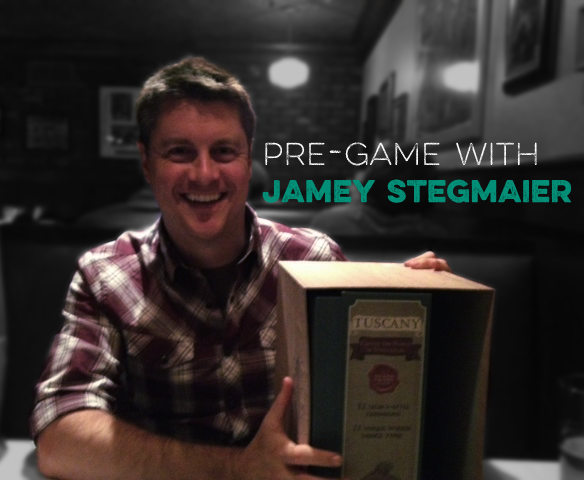
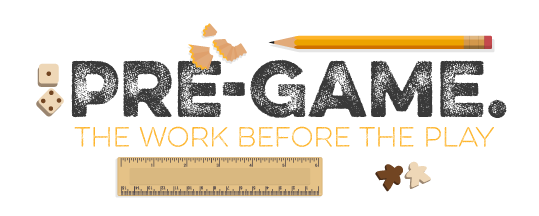


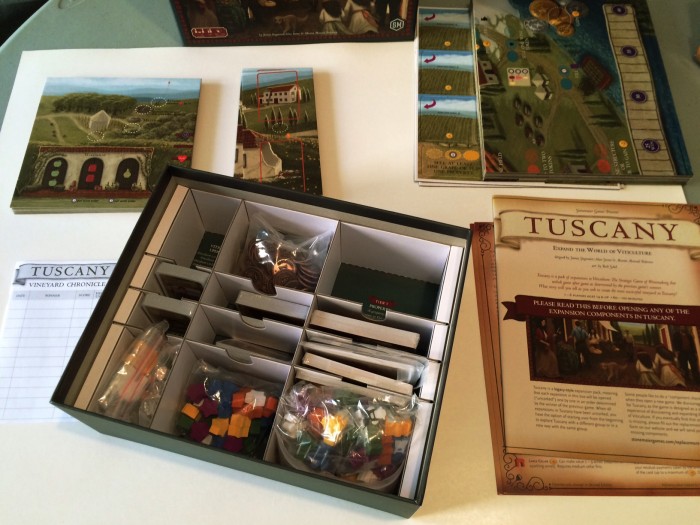
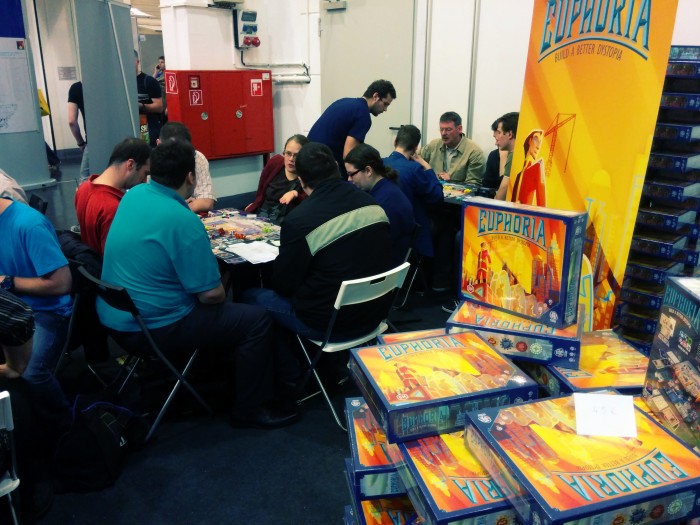
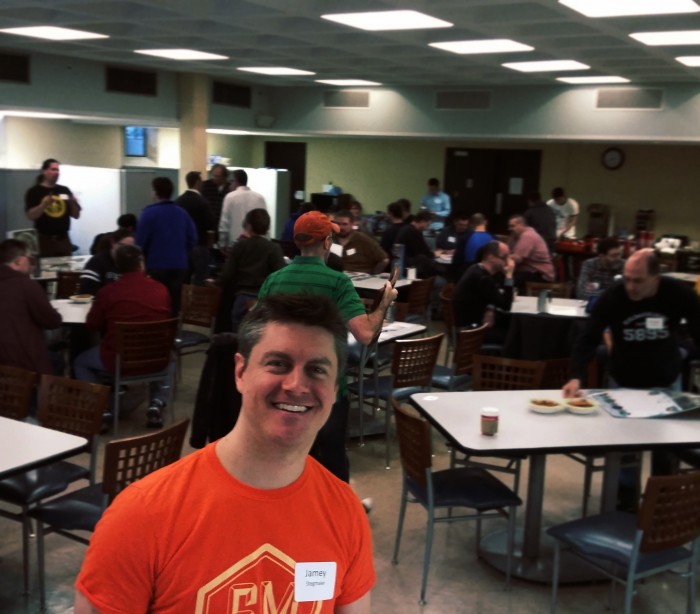
[…] (Jamey’s Interview is here! -A) […]
[…] (Read Jamey’s interview here!) […]